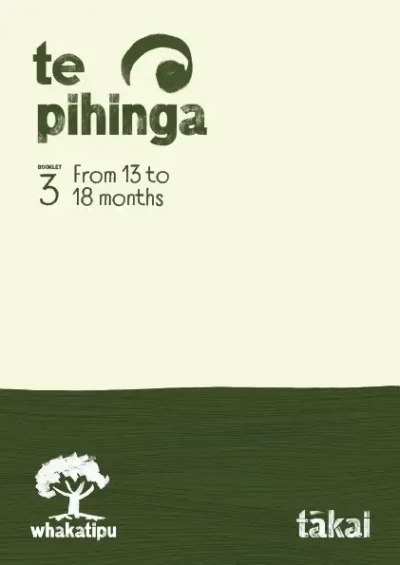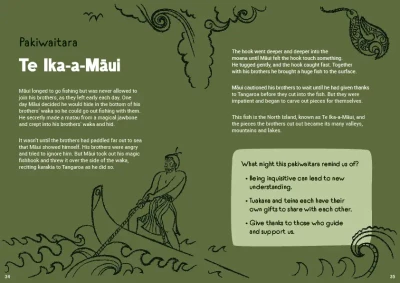
Pakiwaitara – Te Ika a Māui
Te Ika-a-Māui tells the story of Māui the teina, who was never allowed to join his tuakana on their fishing trips. This pakiwaitara will get tamariki interested in storytelling.
Te Ika-a-Māui tells the story of Māui the teina, who was never allowed to join his tuakana on their fishing trips. So one day he sneaked onto the waka and, with his matau made from a magic jawbone, he fished up the North Island of Aotearoa, Te Ika-a-Māui.
Sharing the story
Whānau might enjoy reading the story to their pēpi or even to older tamariki. Parents or other whānau members may also like to practise reading so they can learn to tell the story. Māori culture has a strong oral tradition – storytelling was common in the past and continues to be a great activity.
At this stage, some tamariki may like to have the story read to them, but it depends on how well used they are to being read to and how expressive the reader is.
Helping baby to engage with the story
A parent might begin by just showing the picture on page 34 to pēpi and saying something like "Look at Māui in his waka. He’s pulling up a big fish – pull, Māui, pull!" That might be enough for pēpi at this age.
Te Ika a Māui lends itself to acting out – paddling out to sea, throwing out the fishing line, pulling up the fishing line and cutting up the fish. You could include some props like a string or a paddle to help tell the story.
Remind whānau that repetition is important and little doses often work better than the whole story every time.
If pēpi doesn’t seem interested or gets bored, don’t push it. Leave it until later, or else whānau can continue reading the story aloud. Although pēpi may not want to sit and engage with it, they can still hear it being read. And if it’s read with expression and it sounds like their whānau are enjoying it, eventually pēpi will want to join in too.
Look at the parenting messages at the bottom of page 35, and talk about them with whānau:
- Being inquisitive can lead to new understanding.
- Tuakana and teina each have their own gifts to share with each other.
- Give thanks to those who guide and support us.
- What other messages could be taken from this pakiwaitara?
Conversation ideas
Helpful resources for whānau
-
Mana's great fish<
Mana's great fishMana is crafting a special hook so that he can fish with the other boys; but they wont let him join in. Poor Mana, maybe the tale of his great ancestor Maui Tikitiki will help him land a great fish?
-
The Fish of Maui - By Peter Gossage<
The Fish of Maui - By Peter Gossage -
Te Ika a Maui<
Te Ika a Maui
 pdf 11 MB
pdf 11 MB












